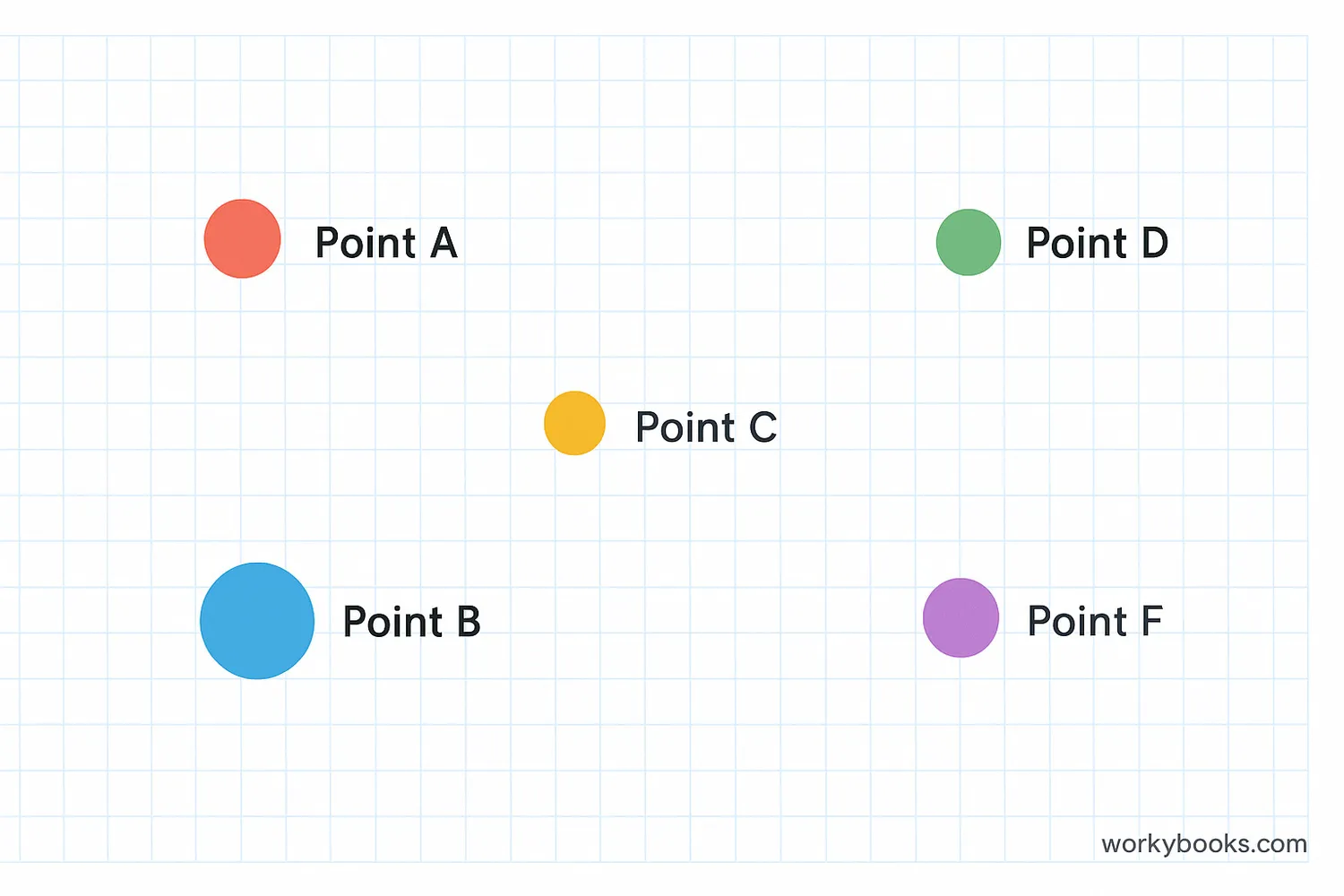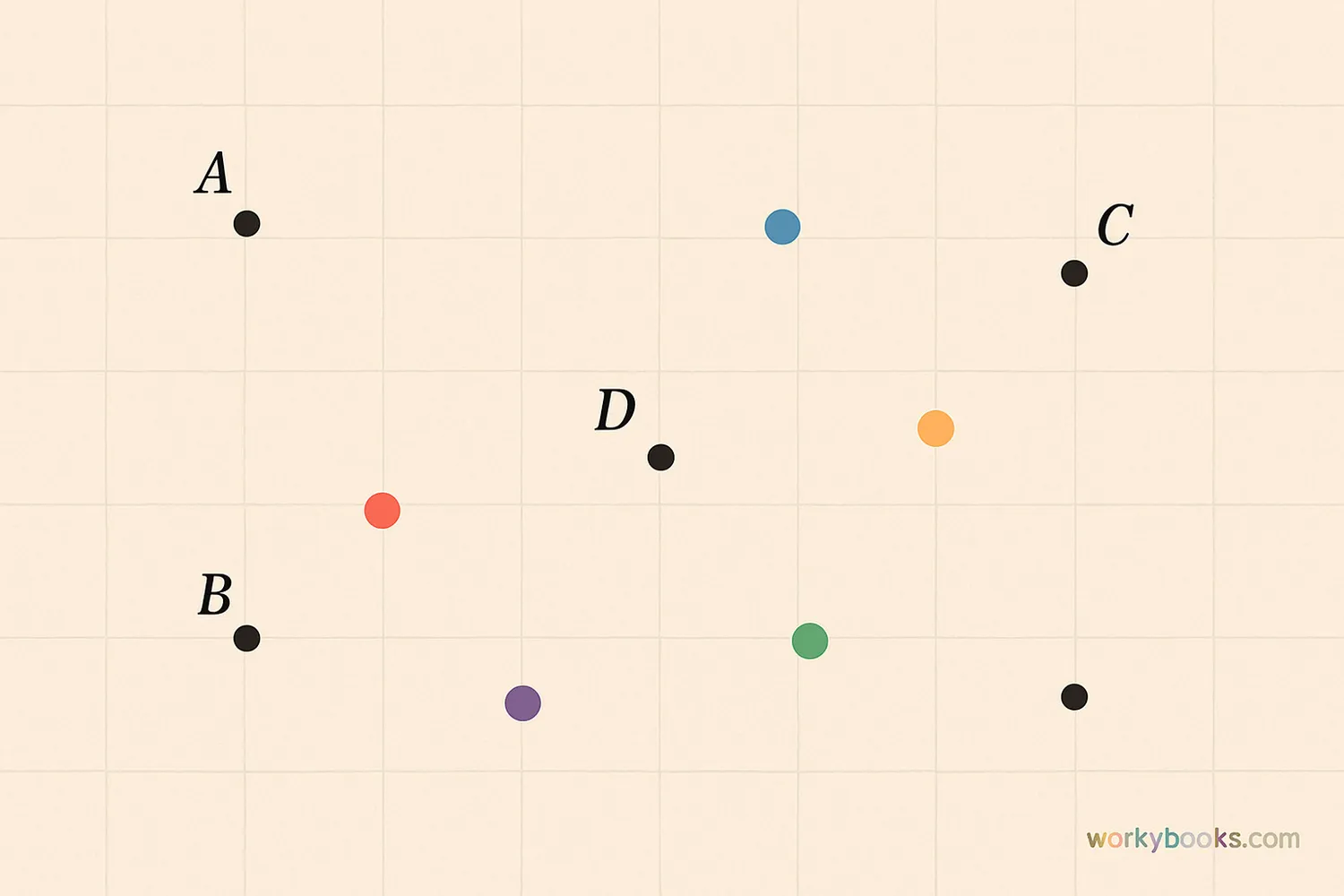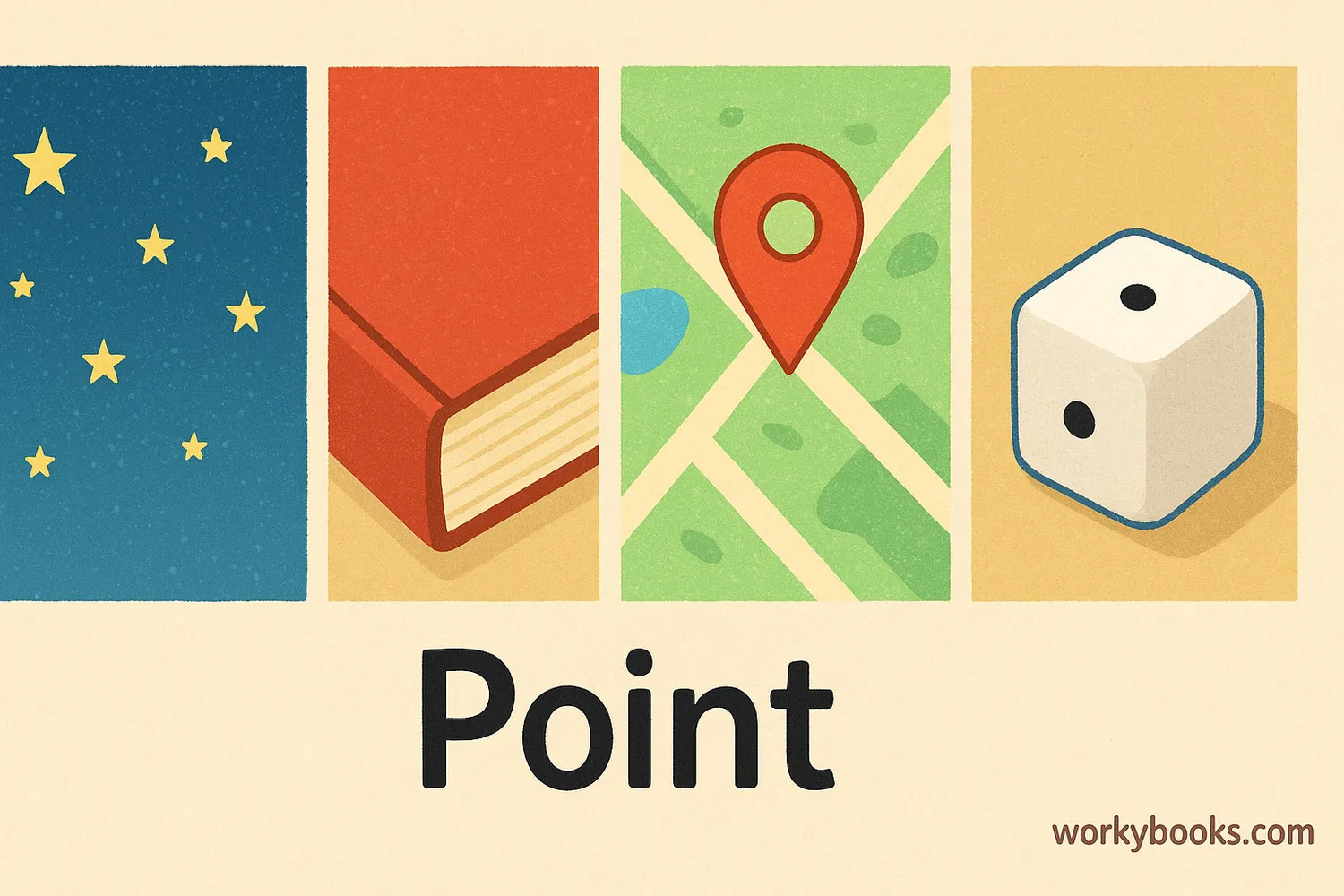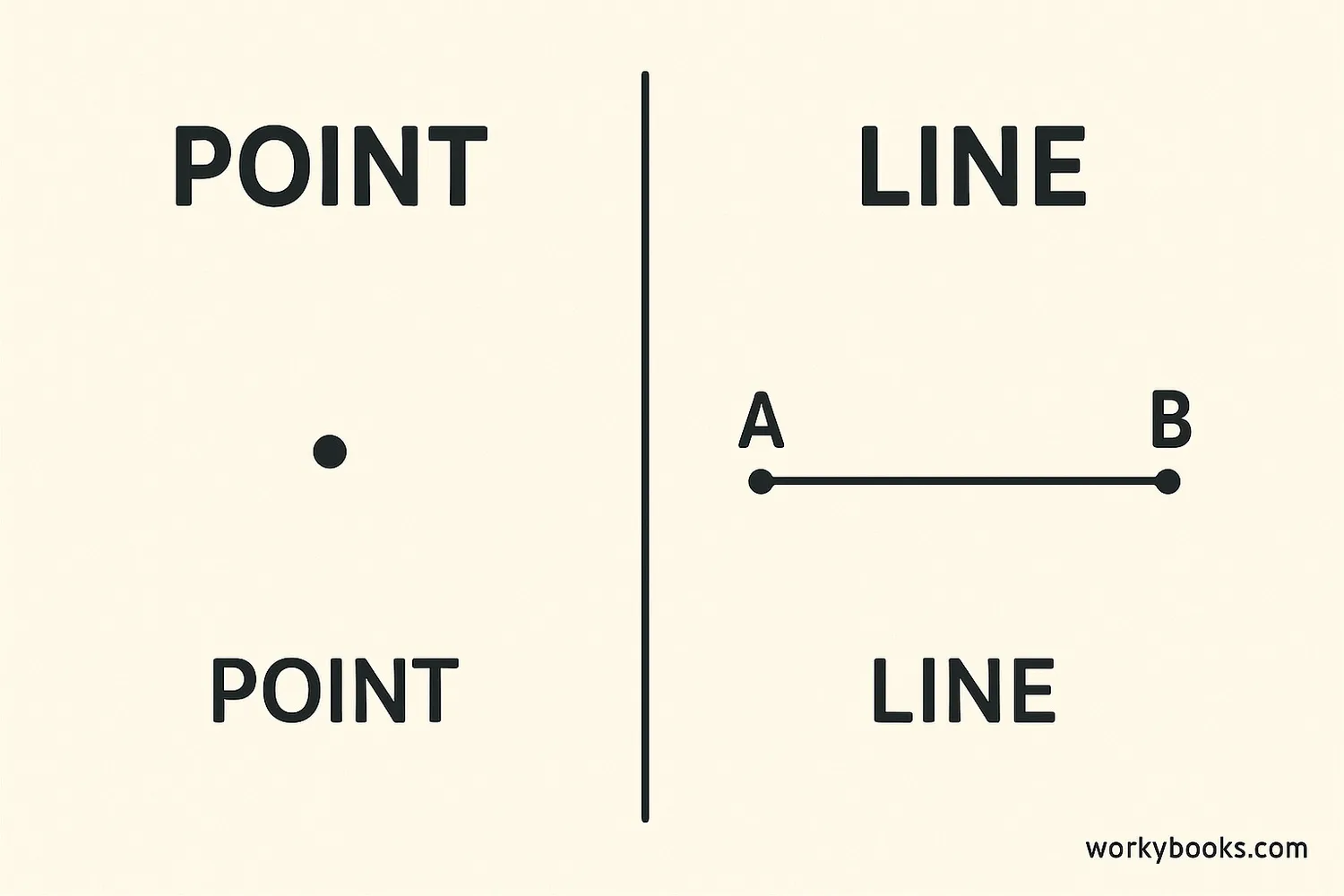Point - Definition, Examples, Quiz, FAQ, Trivia
Discover the building blocks of geometry and how points create shapes!
What is a Point in Math?

In math, a point is an exact location in space. It has no size, no length, no width, and no depth - it just shows where something is. We usually represent points with a dot and label them with capital letters like A, B, or C.
Think of a point like a tiny star in the night sky or the period at the end of this sentence. It marks a specific spot but doesn't take up any space itself.
Math Fact!
Points are considered zero-dimensional because they have no length, width, or height. They're the simplest building block in geometry!
Characteristics of a Point

Even though points seem simple, they have important characteristics:
Naming
Points are named with capital letters like A, B, or X
No Size
Points have zero dimensions - no length, width, or height
Location
Points represent exact positions in space
Representation
We draw points as dots, but remember the dot has size just to make it visible
When we say a point has no size, we mean the mathematical idea of a point. The dots we draw to represent points do have size, but that's just to make them visible. The actual mathematical point is an idea of position without any dimensions.
Examples of Points

Points are everywhere in our world! Here are some examples of things that represent the idea of a point:
Stars in the Sky
Stars appear as points of light in the night sky
Map Locations
Push pins on a map mark specific points
Corners of Shapes
The corners of squares, triangles, and other shapes are points
Dots on Dice
The dots on dice represent points
In each of these examples, we're using the idea of a point to mark a specific location. Even though the physical representation (like a star or push pin) has size, the mathematical point it represents has no dimensions.
Point vs Line

Points and lines are both fundamental concepts in geometry, but they have important differences. Understanding these differences helps us build more complex geometric ideas:
| Feature | Point | Line |
|---|---|---|
| Dimensions | Zero (no length, width, or height) | One (has length but no width) |
| Representation | Dot with capital letter ( A) | Straight path with two arrowheads (↔) |
| Size | No size | Infinite length |
| How they're made | A single location | Many points connected together |
| Example | Corner of a book | Edge of a ruler |
Interestingly, points and lines work together! A line is made up of an infinite number of points. When two lines cross, they intersect at a single point. So while they're different, they're also connected in important ways.
Point Quiz
Test your knowledge about points with this quiz! Answer all 5 questions to see how much you've learned.
Frequently Asked Questions
Here are answers to some common questions about points in math:
Math Trivia
Discover some interesting facts about points and geometry!
Ancient Origins
The concept of a point dates back to ancient Greek mathematicians like Euclid, who described a point as "that which has no part" around 300 BCE in his famous work "Elements".
Building Dimensions
Points are zero-dimensional. When you connect points, you can create one-dimensional lines, two-dimensional shapes, and three-dimensional objects. Everything in geometry starts with points!
Points in Space
In astronomy, stars are often treated as points of light, even though they're actually enormous objects. This is because they're so far away that their size doesn't affect calculations about their positions.
Digital Points
In computer graphics, everything on your screen is made of tiny points called pixels. The word "pixel" actually comes from "picture element" - each one is a colored point that helps create images.





